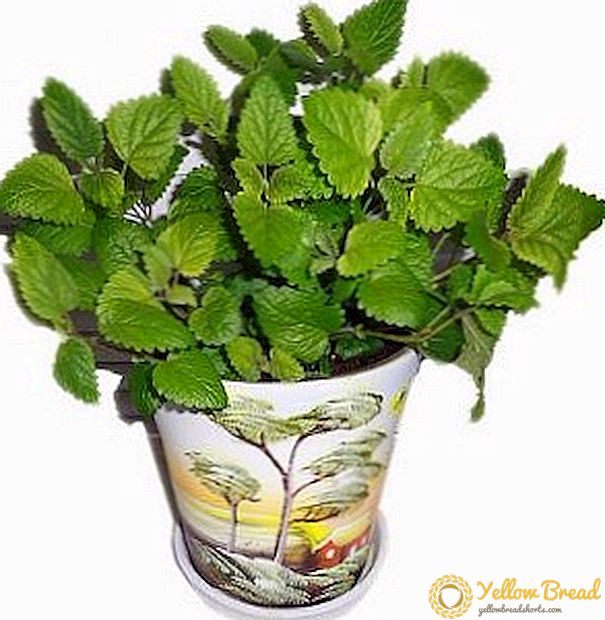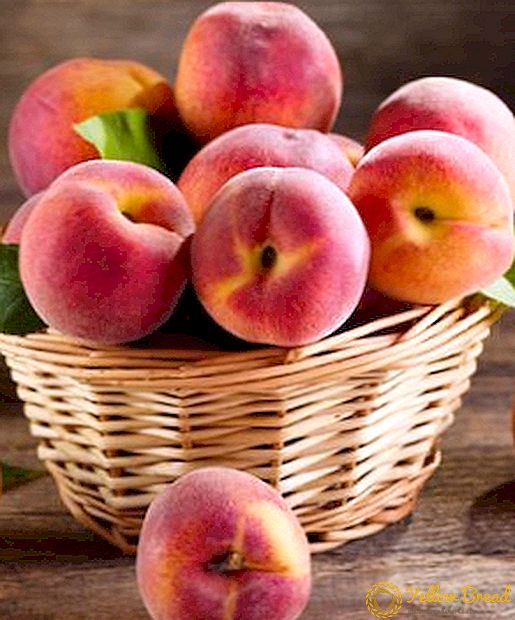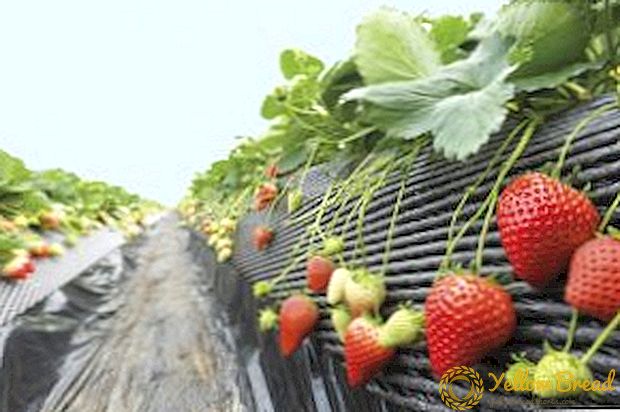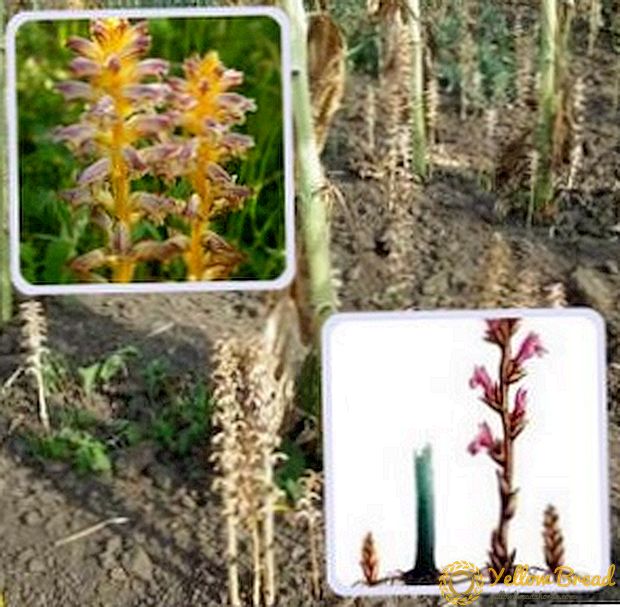 Coniferous wood is always a decoration of the garden plot, because it looks elegant and spectacular all year round.
Coniferous wood is always a decoration of the garden plot, because it looks elegant and spectacular all year round.
Pine, spruce, fir and larch are considered more resistant to disease, compared with deciduous species, but even these plants are prone to attack by pests.
In this article we will talk about Hermes - one of the most common pests of conifers, because many gardeners do not even know about the existence of Hermes, and do not know what it is.
- Hermes - what is this pest?
- Features of the life cycle of Hermes
- Common Hermes
- How to deal with hermes on trees
- Preventive measures: how to increase resistance to pests
Hermes - what is this pest?
Hermes (Adelgidae) - a group of insect pests of conifers from the order horned wing, akin to phylloxera and aphid. Hermes can give this description: small sucking insect up to 2 mm long, black or dark brown in color, with an oblong body and antennae on the head, looks like an aphid. 
Hermes eats the juice of twigs, shoots and needles, sucking it out of young trees. The most susceptible to the attacks of this parasite is spruce and pine. Hermes livelihoods will tell you how to find a pest on a tree: the needles bend and turn yellow; a white bloom or fluff appears on it at the end of spring, as well as on the buds and last year's shoots.
The white bloom is nothing more than a fibrous case that covers the Hermes larva. The plant affected by this parasite from June to August has solid galls on the young shoots, which look like pineapple, from which scales the needles of pine needles stick out and sometimes tar comes out.
Features of the life cycle of Hermes
The life cycle of Hermes is a rather complicated process, which consists of several stages; a cycle can be a year or two long. The duration of the life cycle depends on the type of Hermes.
Also, each species requires either one type of tree or two for its vital activity, but in any case, spruce is always the original plant. Hermes life cycle has a feature - asexual and sexual generations of insects alternate. 
Mature female Hermes spawns her spruce or pine in the kidney, and under the influence of this liquid, a gall is formed on the shoot, in which the female lays eggs in the fall.Gauls contain fat and starch, the hermes larva is born from the egg, which eats the nutrient contents of the gall. In each gall it can simultaneously develop up to 26 larvae, each in its own chamber.
Hermes eggs, as a rule, survive the winter, of which larvae hatch in spring, and then founding females without wings, which are able to reproduce by eggs without the participation of the male. Such reproduction is also called parthenogenetic.
Of the eggs laid by the foundress of the founders during spring and summer, several winged generations with parthenogenetic reproduction appear. These winged individuals are able to settle on fairly large areas for feeding and reproduction. 
Closer to autumn, a wingless generation of females and males is born, and as a result of their mating, fertilized eggs are laid on the spruce for wintering. The foundress will emerge from these overwintered eggs in the spring, and the cycle of life and reproduction will be repeated again.
Hermes species such as spruce-fir and spruce-larch, derive several generations, each of which fulfills its mission and, if necessary, flies to another plant, thereby changing the forage tree, and eventually returns to the spruce, thereby completing the cycle of life .Other species live and breed within the same plant and are often wingless insects.
Common Hermes
The most common are yellow hermes, late spruce hermes, subshark spruce hermes and spruce-larch hermes.
Hermes Yellow. For a year one generation of insects appears. The female foundress of yellow hermes sucks the juice from the needles in the axils of the young shoot, as a result of which an elongated gallus 10-25 cm long is formed. The gall is green and its scales have a red border. The escape, in which the gall appeared, is deformed and does not fully develop. After the gall has eaten on the spruce, the female lays in it a multitude of eggs, from which larvae feed on sap of pine needles inside the gall. In the summer, individuals of the next parthenogenetic generation fly out of the gall, which settle on spruce shoots and continue their life cycle. 
Late spruce hermes. Females create spherical pale green galls with prominent scales that were previously needles - before the attack on the Hermes spruce pest.Late Hermes chooses for his breeding a spruce bud, which is located at the end of a one-year sprout. The female drinks the sap of the plant, and at the same time produces saliva, which by its composition contributes to the formation of gall. Eggs are laid in the fall for breeding in the fall, and in the spring, larvae hatch from it, which leave the spring in July and spread throughout the entire area of the plant. Late spruce hermes lives and breeds on the same plant, preferring for this side branches. 
 Podkorovy fir hermes. This pest does not use galls for reproduction; individuals without wings that live on the bark of the trunk or branches of only one tree - spruce are hatching. It is possible to detect subhermal hermes on a white patina on the bark - these are small female pests covered with a fibrous substance of white color. In this case, the pest affects the European or Siberian spruce.
Podkorovy fir hermes. This pest does not use galls for reproduction; individuals without wings that live on the bark of the trunk or branches of only one tree - spruce are hatching. It is possible to detect subhermal hermes on a white patina on the bark - these are small female pests covered with a fibrous substance of white color. In this case, the pest affects the European or Siberian spruce.
Spruce-larch, or green hermes. The life cycle of a pest of this species has the most complex reproduction process.Hermes female forms a spherical gall up to 20-30 mm in length, and lays eggs in it. In the summer of the larvae, winged migrants of Hermes hatch, which fly for breeding to the larch. These migrants are covered with secretory fibers and similar to the snow cover on the shoots. Hermes' winged individuals feed on larch juice and lay eggs on it. In autumn, larvae emerge from the eggs, which lodge under the larch bark near its buds for wintering. 
In the spring of next year, overwintered larvae reborn as false founders, each of which is able to lay up to 200 eggs. A generation of females and males will emerge from the laid eggs, which will fly over to the spruce for laying a new batch of eggs and will remain on it to winter. Females are bred from these eggs, laying only one egg, which then gives life to one founding female, capable of forming galls. So there is a cyclic reproduction and development of Hermes with the participation of two varieties of trees.
How to deal with hermes on trees
 When dealing with Hermes, one should not forget that this is not a disease, but a pest, and it is possible and necessary to get rid of it, like from a parasitizing insect. If Hermes is found on spruce or another coniferous plant, the first thing to do is to cut and burn parts of the shoots with galls, it is advisable to have time to do it in early summer, until the larvae in them finally develop.
When dealing with Hermes, one should not forget that this is not a disease, but a pest, and it is possible and necessary to get rid of it, like from a parasitizing insect. If Hermes is found on spruce or another coniferous plant, the first thing to do is to cut and burn parts of the shoots with galls, it is advisable to have time to do it in early summer, until the larvae in them finally develop.
Then in several passes wash the pests from the branches with a stream of water under pressure. After that, you need to sprinkle wood with a solution of mineral oil - 150 ml per 5 liters of water. If the specified sparing methods were not effective, the plant is treated with Aktara, Confidor, Mospilan or Commander according to the instructions for use.
Preventive measures: how to increase resistance to pests
 The most important prophylactic is do not plant near spruce larch, since the proximity of these plants has a positive effect on the reproduction of Hermes. Healthy seedlings should be planted in loose and fertile soil, in dark places without drafts.
The most important prophylactic is do not plant near spruce larch, since the proximity of these plants has a positive effect on the reproduction of Hermes. Healthy seedlings should be planted in loose and fertile soil, in dark places without drafts.
It is recommended to mulch the soil with pine bark, and the plant can be treated with a means of improving immunity - "Epinom", this will provide additional protection for coniferous trees from Hermes. Periodic repeated spraying of conifers with “Decis” or “Fastak” preparations will serve as a preventive remedy for Hermes.






